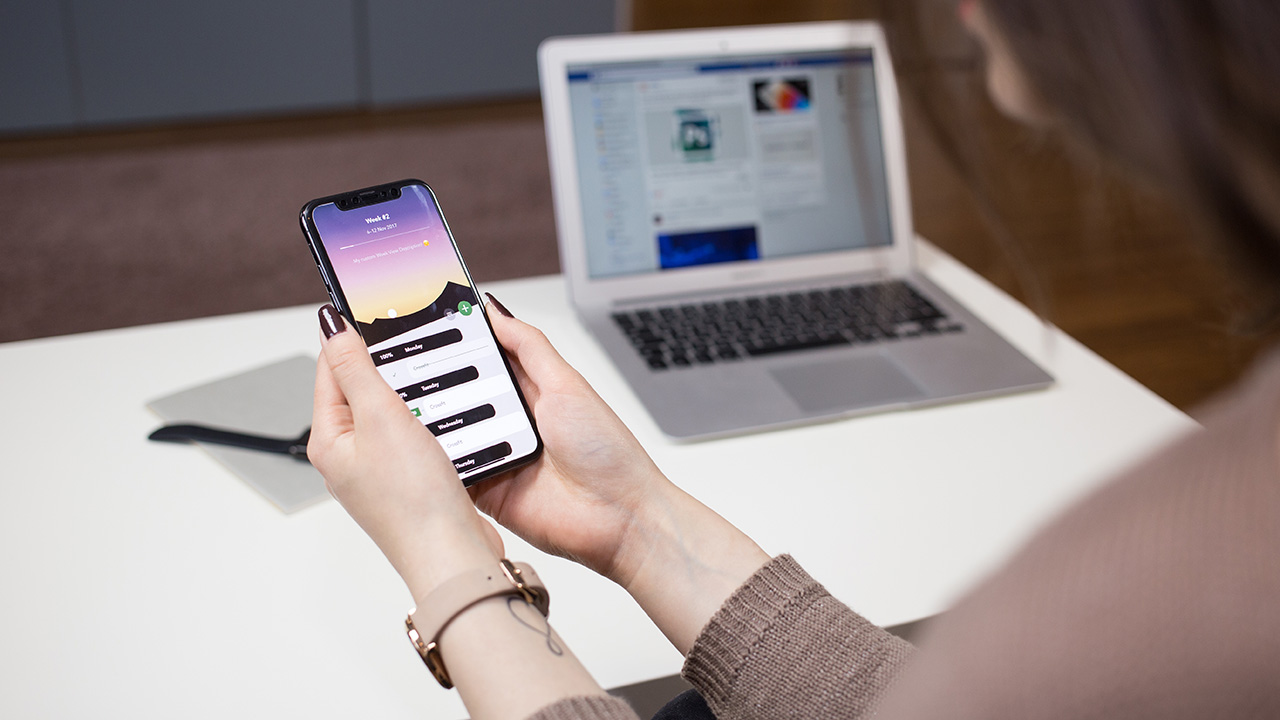The increasing popularity of multimedia content and the growing use of multiple devices to access it have presented a host of challenges. However, this also poses challenges, for example, regarding compatibility and user interfaces. Users often face difficulties when trying to display multimedia content seamlessly across different devices, as each device may have its own technical specifications and limitations.
This fragmentation in device types and capabilities can lead to inconsistencies in the user experience, making it crucial for developers, manufacturers, and content providers to address these challenges and ensure optimal performance across multiple devices. In any case – this problem is a serious course development issue and must be considered.

Multiple devices care for a certain inhomogeneous situation in technology-enabled training.
Are there studies about this problem?
The answer is easy: There are no viable studies available. An analysis of display problems, working with a pointing device – all this is obviously not adequately researched.
Nevertheless, we found an interesting document created in the frame of another Erasmus+ Project (Implementation of Interactivity and Multimedia-Based Content using Multiple Devices in Adult Education, 2020-1-AT01-KA204-078005). The study is available from the download page.
Background of the study
The team created three different multimedia-based and interactive pages providing the learning content. One of them was a simulation of creating an electric circuit that could be tested in the virtual lab. The team asked the surveyed people to text each of these applications using different devices (in any case a smartphone, but other devices such as tablets as well). The participants in this study compiled questionnaires evaluating their experience with the learning content. The questionnaires were implemented in Austria, Portugal, Italy, and Denmark. The processed questionnaires have been evaluated and interpreted.
Essentials from the study (questionnaire)
In the context of multiple devices, the following issues arise:
Conclusion and “Lessons Learned”
To enhance the user experience of multimedia content on multiple devices, we recommend adopting responsive design principles. This involves adapting the layout, size, and functionality of the content to fit the screen characteristics of each device, ensuring a consistent and appropriate display.
Conducting thorough cross-platform compatibility testing is essential to identify and address any issues that may arise when accessing the multimedia content on different devices, operating systems, and software versions. Additionally, optimizing file sizes through techniques like compression and adaptive streaming can improve streaming performance and download speeds, especially for devices with limited storage or slower internet connections.
Designing user interfaces that are intuitive and user-friendly, with easy navigation, clear controls, and intuitive playback options, will further enhance the overall experience. It is also important to optimize the performance of the multimedia content by maximizing resource efficiency, minimizing performance bottlenecks, and taking advantage of hardware acceleration where possible.
Lastly, ensuring accessibility for users with disabilities by implementing accessibility standards, supporting assistive technologies, and incorporating inclusive design principles will contribute to a more inclusive and enjoyable multimedia experience.
The project team will consider the mentioned items to provide multimedia content optimized for a seamless and satisfying user experience across a wide range of devices in the developed training course.
